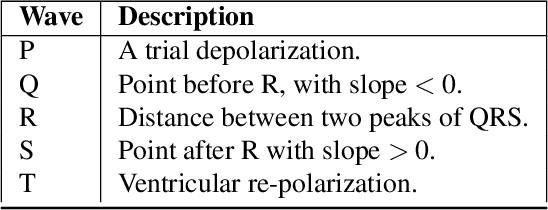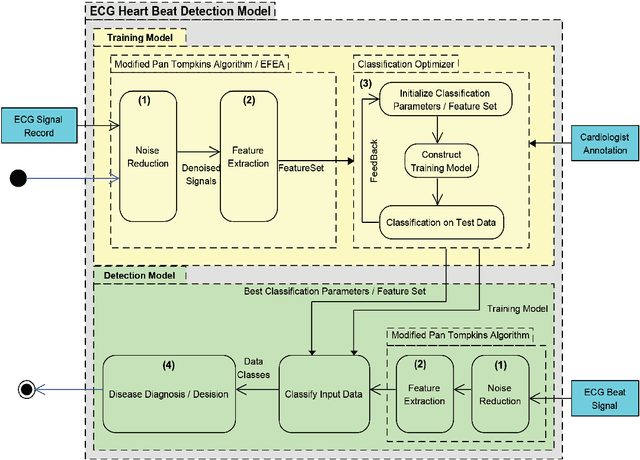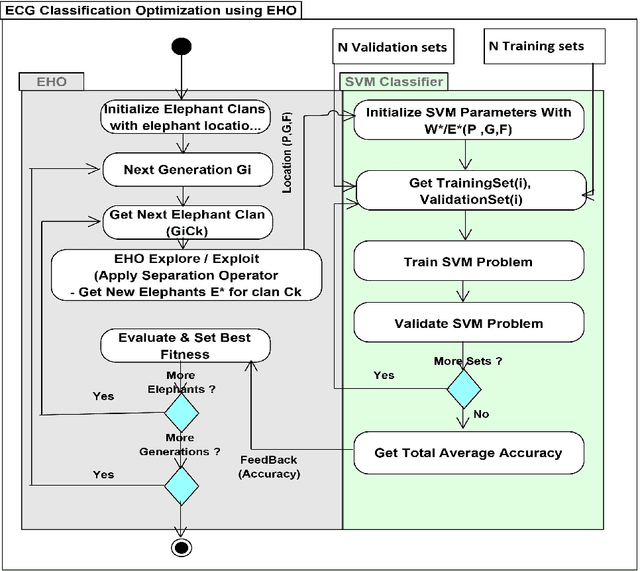Moataz Kilany
Combining Support Vector Machine and Elephant Herding Optimization for Cardiac Arrhythmias
Jun 20, 2018



Abstract:Many people are currently suffering from heart diseases that can lead to untimely death. The most common heart abnormality is arrhythmia, which is simply irregular beating of the heart. A prediction system for the early intervention and prevention of heart diseases, including cardiovascular diseases (CDVs) and arrhythmia, is important. This paper introduces the classification of electrocardiogram (ECG) heartbeats into normal or abnormal. The approach is based on the combination of swarm optimization algorithms with a modified PannTompkins algorithm (MPTA) and support vector machines (SVMs). The MPTA was implemented to remove ECG noise, followed by the application of the extended features extraction algorithm (EFEA) for ECG feature extraction. Then, elephant herding optimization (EHO) was used to find a subset of ECG features from a larger feature pool that provided better classification performance than that achieved using the whole set. Finally, SVMs were used for classification. The results show that the EHOSVM approach achieved good classification results in terms of five statistical indices: accuracy, 93.31%; sensitivity, 45.49%; precision, 46.45%; F-measure, 45.48%; and specificity, 45.48%. Furthermore, the results demonstrate a clear improvement in accuracy compared to that of other methods when applied to the MITBIH arrhythmia database.
 Add to Chrome
Add to Chrome Add to Firefox
Add to Firefox Add to Edge
Add to Edge